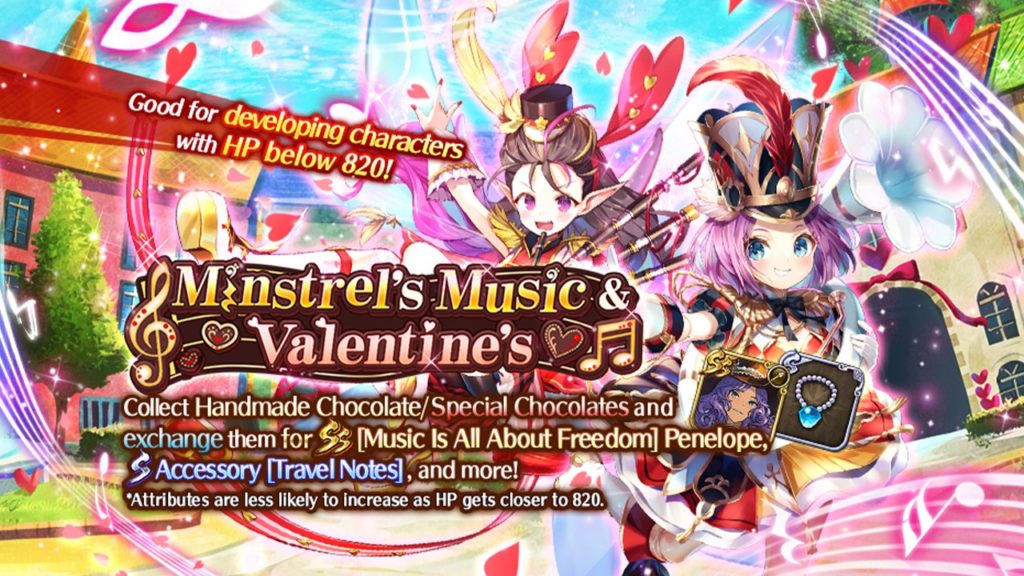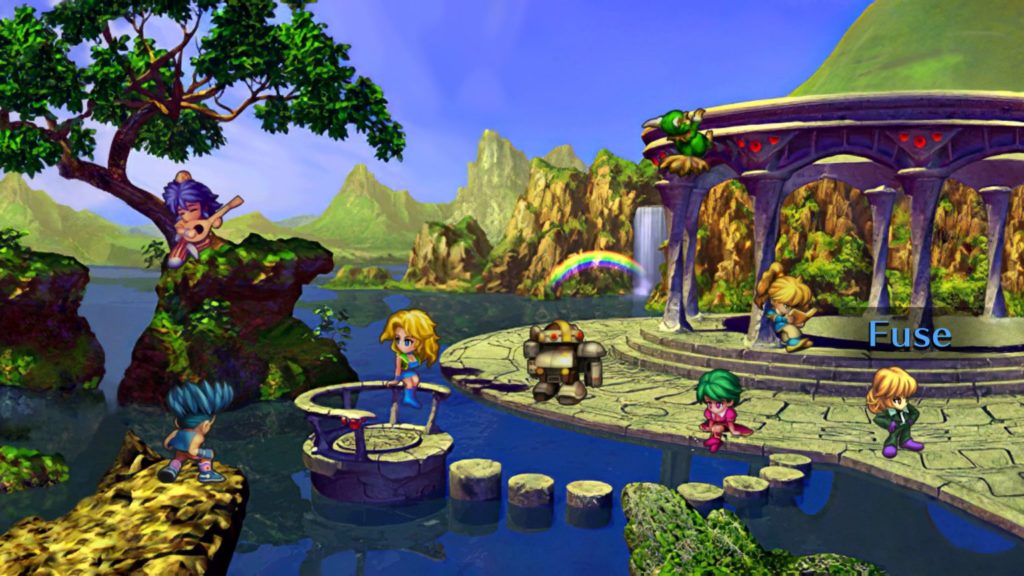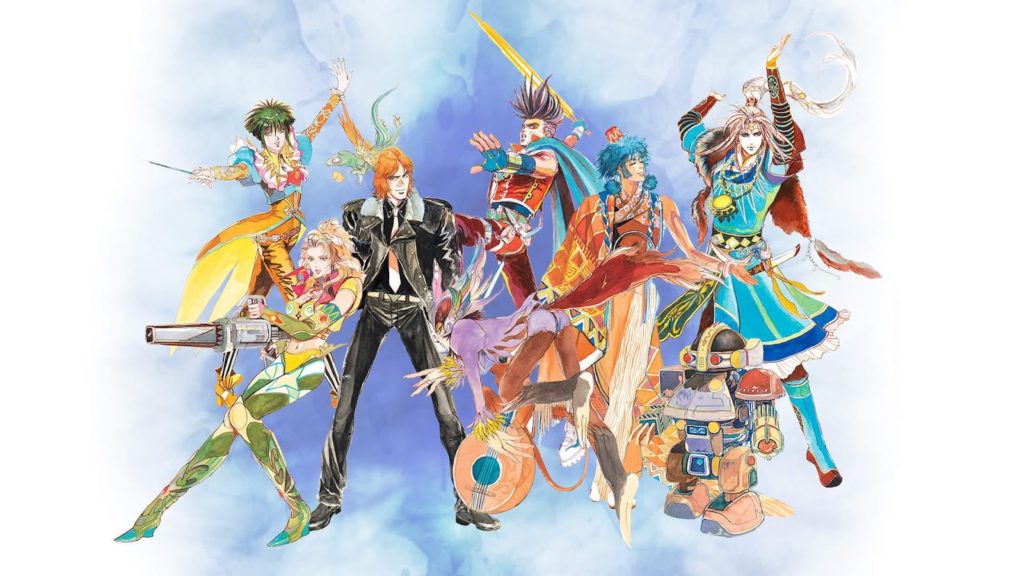The SaGa series has been on a remaster/remake/rerelease kick lately – in part because the series seems to have strong advocacy within Square Enix because of a successful mobile game (Romancing SaGa Re;Universe, which pains me to type) which helps cross-promotion, and likely in part because it makes money. While the cynic in me would say these are probably low-effort cash grabs, so far these games have been more accessible and better than the originals. So this is at least a medium-effort cash grab. Not bad!

I’ve mostly been a “SaGa-adjacent” RPG player, primarily because many of these games didn’t make it over. The ones I did play either didn’t have the SaGa label (Final Fantasy Legend), or were among the few that made it over during the golden age of RPGs – which is, of course, when I was mature enough to enjoy them and had the time to play them. Watching remasters come out or get localized for the first time has been a treat, since it’s like getting a new classic RPG series, with most of the original sensibilities intact (in contrast to e.g. the first round of Final Fantasy mobile remakes).
I played SaGa Frontier when it came out in 1998 but don’t have many memories of it. The few pieces I remembered were a chaotic mess of vampires, robots, magic, and the bio-lab. Prior to the PSX, and after it, there were few games like it. SaGa Frontier IS a mess – a weird, unfocused mess and even remembering it, having played it recently, feels a little bit like a fever-dream because it is so unfocused. This makes it pretty divisive – your typical Square JRPG fan wants a lengthy story, with character arcs, consistent atmosphere, and a snappy (if not also easy) battle system. SaGa Frontier really only delivers on the last, because its intent isn’t really to be consistent or to keep the player entertained with one plotline for dozens of hours.
What SF does really well is present these multiple disjointed, short stories that take place in a shared world. Although the characters themselves rarely interact, the way that you can recruit the same characters – or make different choices – in each scenario makes the characters feel more alive. The New Game + features added in the Remastered version make experimentation safer and allow you to get to the scenario-exclusive parts faster. This is one big reason why SaGa Frontier Remastered is better for its changes – it takes a game that has several fast-paced, distinct plotlines and streamlines the non-plot parts of it. This landed particularly well for me, since I don’t have a lot of gaming time – if I knew I had to grind to beat a major boss every time I played a new route, I would’ve given up after finishing one scenario and totally ignored Fuse’s epilogue.

The epilogues, available by selecting Fuse as your character after beating a scenario, offer a little bit of an outside perspective and some new bits of plot for each scenario. In my experience playing through two cases, they change minor parts of the storyline of the scenario but add a little bit more flavor to the world. If your only reason to play the remaster is these new additions, I wouldn’t recommend going for it – they’re neither particularly exciting nor very long compared to the rest of the game. Otherwise, the Fuse sections may at least pique your interest for a bit, particularly if you enjoy the idea of the new “superbosses.”
SaGa Frontier’s strength is also its weakness. Although the characters themselves are fun, the world feels smaller each time you play through a new scenario. There are several questlines, and choices are often exclusive, but since many of these choices are binary and only a few characters or realms are totally scenario-exclusive, there will be less and less “new” to see with each game. It also becomes pretty clear early on that many worlds are only used for one or two characters or subquests. My excitement to play the game dwindled after two scenarios, and I suspect I may not want to explore everything SaGa Frontier has to offer. That’s fine. Each character and each world has a distinct motif, and it doesn’t pressure you to go experience everything with every character. While character selections matter a little more here than in other SaGa games, you’re not going to get a vastly different experience with each – more like an hour or two of exclusive content, along with the core sidequests and worlds.
Most of these stories and characters are relatively unconventional for JRPGs – there is no “traditional fantasy” world or character. The closest might be Blue, but the background to his scenario is unusual enough to count as non-standard (spoilers for 2 minutes into his story: he’s trying to master magic so he can kill his twin – who seems considerably more chill). This makes it feel more experimental. Most characters are modern or near-future in style, with some outliers. T260G’s story is kind of a sci-fi exploration with lots of robots and only a few humans along for the ride – in a contrast to the few self-described science fiction RPGs of the era giving up the “science” part pretty early on. Asellus’s story is more survival/horror themed (with a lesser theme of finding one’s identity in a changing world) – another rare genre in RPGs. These varied tones make the game itself less cohesive, but if a player does a little upfront digging they can find the story they’re most interested in. If you’re reading this review and you’re interested in the game, but don’t want to do that digging – my suggestion would be to avoid Lute, Blue, and Riki for a first round. They won’t be impossible, but they’re even less focused than the others.

Seeing this game remastered now reminds me (as it may remind you) that there was once a time where games like this – unconventional and weird – could actually get pitched, developed, and released from a major studio. I’m not going to claim that’s impossible today, but I would expect this kind of game to come from an indie studio absent much of the funding and support this game received. It’s an interesting window into a particular era of Square games, when they chose (or perhaps could afford) to produce more unusual games. I’m not going to claim games are worse now. Far from it, many major game releases are fantastic, and the breadth of indie options available is frankly intimidating. But it would definitely be refreshing to see a substantial budget put into a more experimental style of RPG, rather than the typical retread of existing story-and-mechanic landscapes.


If you look at Squares output through the 90’s and early 2000’s, it definitely feels more prolific. They were just tossing games out left and right. I’m assuming that most of them made money – either that, or they were using a “Hollywood model” in which the big tentpole games funded the weirder, loss-inducing stuff. But something tells me that that probably isn’t accurate.
But I’d sure like to know! Mainly because I’d like to know what exactly contributed to this shift in output from Square (and other similar publishers).
SaGa Frontier may be an outlier, but it was much more popular in Japan than in the US – I couldn’t find concrete stats in some brief searching, but it sold over a million in Japan. I’m not sure that was enough to justify the budget. but apparently that was in the top 20 range on the system.
That popularity alone probably justified the work put into this remake, but for the original release I don’t know how they made that decision and I’d really be curious.
I’m not sure about some of the other weird Square titles (thinking of Xenogears, Chrono Cross, Legend of Mana, Vagrant Story but there were definitely more out-there things like Ehrgeiz and Tobal No. 1). It does seem like they must have been flush with cash sometime in the late SNES – early PS1 era to fund all those projects.
I wonder if some of that prolific output was speculative in the hope that RPGs would take off in other markets like they did in Japan. If so, it seems that bet didn’t pan out aside from Final Fantasy.
Plus Brave Fencer Musashi, Parasite Eve, Einhander, and Bushido Blade (and a pile of ‘Chocobo’ games I don’t know anything about) – wow there WAS a lot out there beyond the obvious FF stuff at one point in time.
I always figured the bet on RPGs internationally DID pay off, at least in the PSX era, given how much RPGs remained a big deal on PS2. I just assumed the move to safer stuff was a result of higher costs and the necessary increased commensurate need for a hit to be a BIG hit. If you only need to sell 50,000 copies (a made up number) for Threads of Fate to be profitable, it’s got to be easier to green light it than trying to invest the same level of effort for a game now that has to sell 500,000 copies before you’re in the black.
[…] Grace is the best Saga game I have played, which is similar to being the smartest Qanon believer. The series has managed to improve in stature amongst people who care about long running JRPGs, no doubt […]